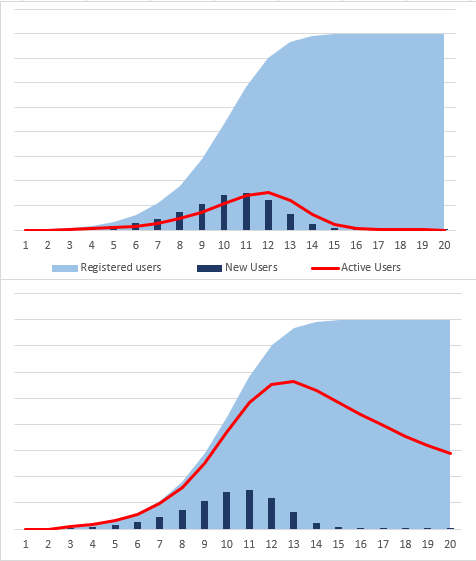- ARPDAUPosted 12 years ago
- What’s an impressive conversion rate? And other stats updatesPosted 12 years ago
- Your quick guide to metricsPosted 12 years ago
Pyramid and Funnel: modelling your game and your business

Today I’m excited to announce that we’re launching our first ever poster. We’re using the poster to talk about a new model of free-to-play game design: the pyramid. It’s a model that we hope will transform the way that games are designed.
Get it now
Is monetisation ruining F2P games?
Two weeks before GDC 2013, MMO designer and former Creative Director of Free Realms at Sony Online Entertainment Laralyn McWilliams published a Gamasutra post arguing that free-to-play social games are too often beset by a metrics-oriented drive to push whales down the funnel and churn out freeloaders. She explained very clearly how this can make the game less engaging:
“I watched those games churn us all out. I saw the heart of any online game — the community of players — start to flounder as the friction curve increased.”
Is bad design an inevitable result of IAP-based monetisation? McWilliams didn’t make this claim, but many critics of free-to-play within the game design community have.
A new model for game design
It is very useful to think of your business as a funnel. But thinking of the game itself as a funnel can be wrongheaded, and I wonder if McWilliams’s experience shows that the industry is suffering from a misconception that non-paying users should be ‘filtered out’.
For the design of the game itself, a new model is needed. A model that sees freeloaders as the foundation of your game, and encourages you to build games that are layered with different kinds of experiences for different levels of engagement.
The pyramid is a design-oriented inversion of the funnel; rather than filtering users from acquisition to monetisation, the pyramid suggests that minnows, dolphins and whales alike can all thrive in a game’s ecosystem. The pyramid is made of a fun core game that is free-to-play forever, a retention game that can be boosted with dolphin-level microtransations, and a competitive ‘super-fan game’ where the highest engagement and largest spending happens.
The pyramid is a way of putting into practice the goal of free-to-play game design: letting anybody access your game, and allowing people who love what you do to spend lots of money on things they truly value.
Sharing the model
We want to see more studios think of their games as pyramids. We’re encouraging people to share the infographic above with as many people as possible. We also think that you might want a physical resource to assist an ongoing conversation about the model in your studio. You can buy the poster in physical form today, put it on your wall when it arrives, and get started changing the way that free-to-play games are made.













